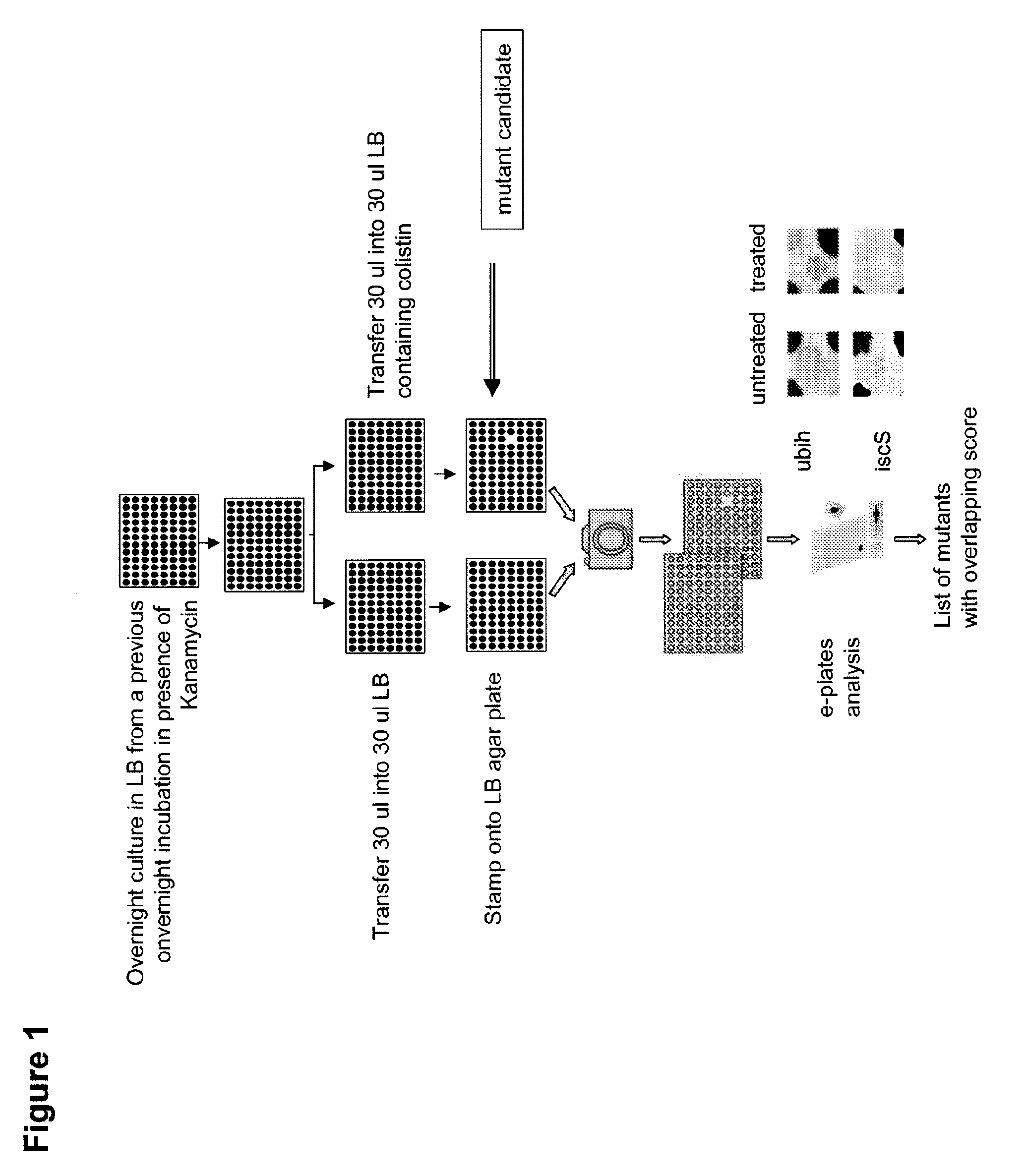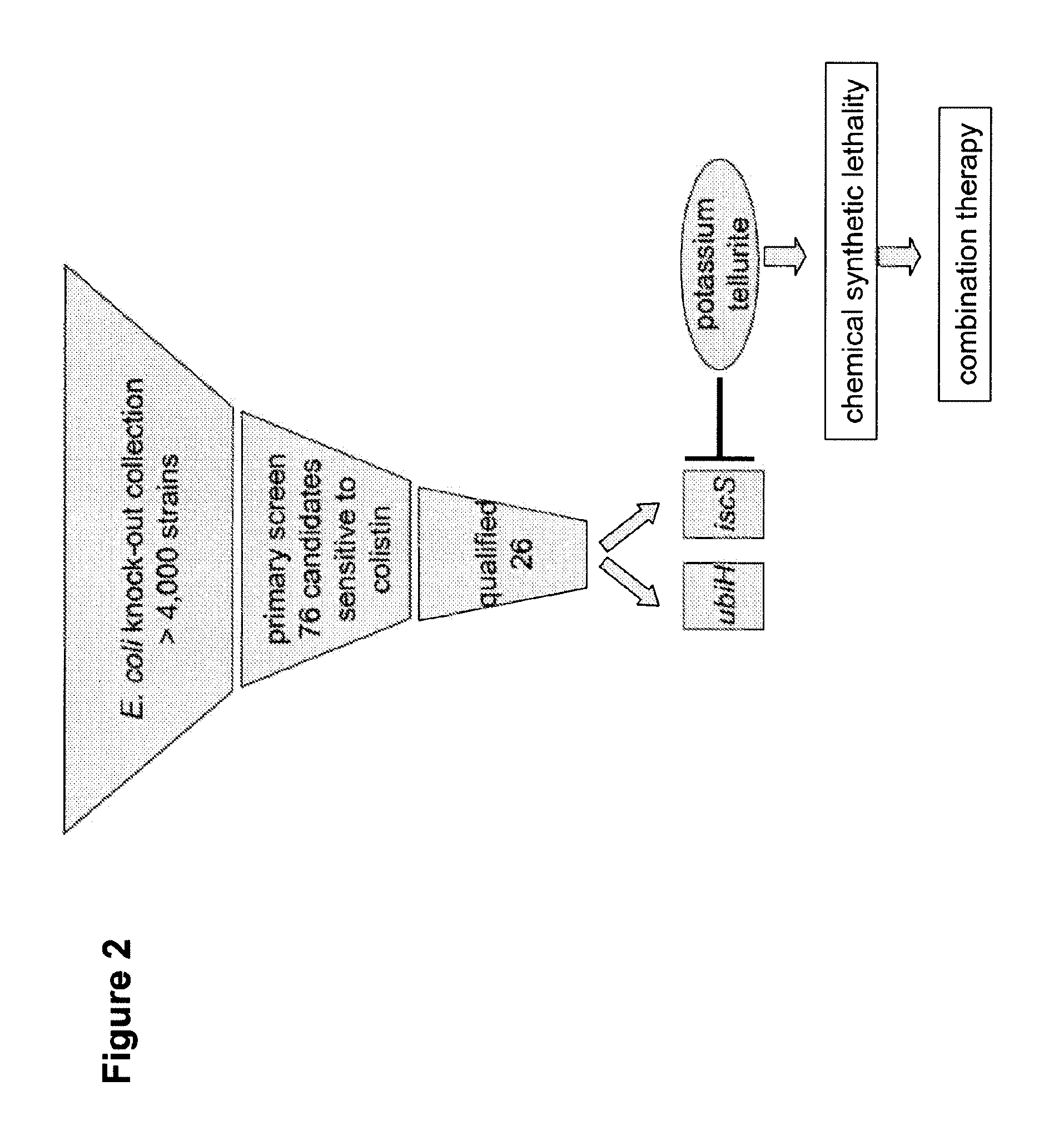Compositions and methods to potentiate colistin activity
a technology of colistin and composition, which is applied in the field of compositions and methods to treat drug resistant bacteria, can solve the problems of bacteria more susceptible to colistin, and achieve the effect of increasing the effectiveness of antimicrobial agents, such as antimicrobial peptides
- Summary
- Abstract
- Description
- Claims
- Application Information
AI Technical Summary
Benefits of technology
Problems solved by technology
Method used
Image
Examples
example 1
[0306]Over 4,000 single mutant E. coli were initially screened in a cell based assay for ability to grow and / or survive in the presence of colistin, an antimicrobial peptide (FIG. 1). Approximately 92-95 E. coli mutants were unable to grow and survive in the presence of colistin. The gene loci of the mutations were analyzed and identified which are listed in FIG. 2. The homology of the identified gene loci (herein referred to as “gene products”) was analyzed with respect to gene homology across different species of bacteria (FIG. 3), and it was found that 24 of 66 gene products had human homologues, listed in Table 1. Of these 24 gene products, 7 had known identified inhibitor which are listed in Table 2.
[0307]The efficacy of colistin in inhibiting the growth and / or suppressing survival of E. coli in the presence of one inhibitor, mefloquine was assessed in a minimum inhibitory concentration (MIC) assay. As shown in FIG. 4, in the absence of mefloquine, the MIC of colistin is 6.3, w...
example 2
[0309]The inventors used a systems biology platform to identify of several genes and therefore pathway, which once inactivated can increase the killing effect of colistin. This approach has its origin with the notion of synthetic lethality screen in yeast where two genes non essential for viability on their own are found to induce a non viable strain when combined and under specific growth condition(s) (Cottarel, 1997). With the access to the yeast deletion knock out library (reviewed in Ooi et al., 2006) major efforts have been initiated to create genetic mapping of gene interaction (Tong et al., 2004). In a further step such reagents were used to link bioactive compounds to genetic pathways (Parsdons et al., 2004). Reminiscent to this work, our screen was designed to identify mutants exhibiting hyper sensitivity to antibacterials to (i) map a chemogenomic response pathway and (ii) to further identify and / or develop inhibitors which can mimic the genetic observation. Indeed, such g...
PUM
| Property | Measurement | Unit |
|---|---|---|
| concentration | aaaaa | aaaaa |
| time | aaaaa | aaaaa |
| time | aaaaa | aaaaa |
Abstract
Description
Claims
Application Information
 Login to View More
Login to View More - R&D
- Intellectual Property
- Life Sciences
- Materials
- Tech Scout
- Unparalleled Data Quality
- Higher Quality Content
- 60% Fewer Hallucinations
Browse by: Latest US Patents, China's latest patents, Technical Efficacy Thesaurus, Application Domain, Technology Topic, Popular Technical Reports.
© 2025 PatSnap. All rights reserved.Legal|Privacy policy|Modern Slavery Act Transparency Statement|Sitemap|About US| Contact US: help@patsnap.com



